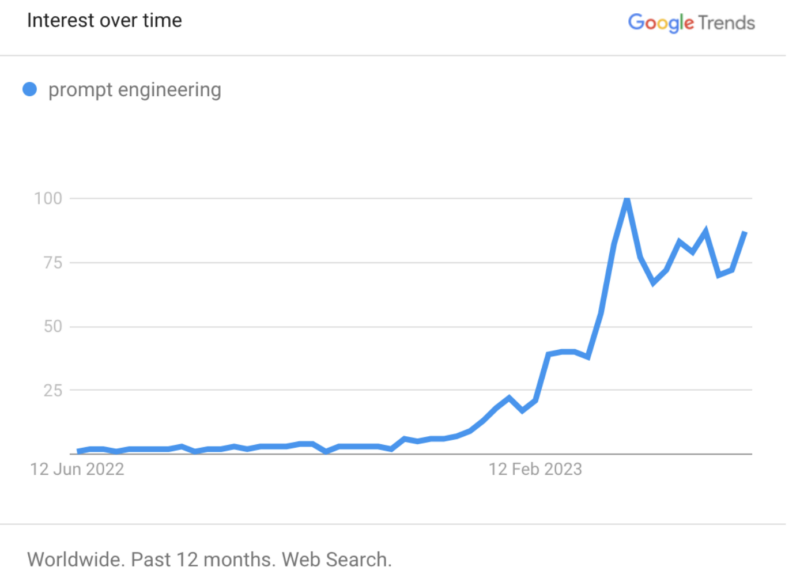
Table of Contents
In the realm of natural language processing, prompt engineering stands as a crucial pillar shaping interactions with advanced language models like GPT-3.5. At its core, prompt engineering involves the art of constructing inputs that guide the model's responses, allowing users to harness the full potential of these powerful language models. Understanding the nuances of prompt engineering is not only essential for maximizing the effectiveness of AI applications but also for navigating the ethical considerations, potential pitfalls, and future trends within this evolving field.
Introduction to Prompt Engineering
Prompt engineering serves as the gateway to unlocking the capabilities of language models, offering a means to direct their vast linguistic prowess toward specific tasks. A fundamental comprehension of how language models operate and the role of prompts in influencing their outputs lays the groundwork for effective prompt engineering. As users delve into crafting tailored prompts, the symbiotic relationship between input and output becomes apparent, revealing the nuanced dance between human direction and machine-generated language.The intricacies of prompt engineering unfold as users become adept at fine-tuning inputs to elicit desired responses from language models. Understanding the model's strengths and limitations is paramount in constructing prompts that not only guide but also optimize performance. This section delves deeper into the iterative nature of prompt refinement, emphasizing the role of experimentation and adaptation in achieving optimal results.

Source: Google Trends
Related Article: Top 10 Tech Trends to Watch Out for in 2024
Applications of Prompt Engineering
How Chat GPT Utilizes Prompt Engineering
One notable application of prompt engineering unfolds in the context of chat-based interactions, where GPT-3.5 showcases its adaptability to diverse tasks. By strategically constructing prompts, users can guide the model to excel in conversation, information retrieval, and complex problem-solving. Examining real-world examples sheds light on the versatility of prompt engineering, illustrating its impact on refining user experiences and achieving desired outcomes in chat applications.
or instance, in conversational applications, crafting prompts that set the context and guide the model's responses ensures coherent and contextually relevant dialogues. Users can leverage prompt engineering to navigate through complex queries, eliciting responses that demonstrate the model's ability to understand and engage meaningfully. Moreover, this section explores how the same principles can be applied to other domains such as content generation, code completion, and more.
Legal Document Drafting
Legal professionals engage in the meticulous process of drafting complex legal documents, and prompt engineering emerges as a transformative tool in this domain. By carefully constructing prompts tailored to legal language and context, lawyers and legal researchers can leverage language models to generate sections of contracts, legal briefs, or case summaries. This application not only expedites the document creation process but also enhances the overall quality and accuracy of the content.Prompt engineering in legal document drafting involves providing the language model with specific instructions regarding legal terminology, formatting conventions, and contextual nuances. For instance, a prompt might guide the model to draft a confidentiality clause in a contract or summarize a legal precedent for inclusion in a brief. By refining prompts iteratively, legal professionals can train the language model to understand and reproduce intricate legal language with precision.
The benefits of prompt engineering in this context extend beyond mere efficiency. It allows legal practitioners to focus on higher-level analyses, strategic decision-making, and client interactions, rather than spending excessive time on routine drafting tasks. The language model becomes a collaborative partner, handling repetitive aspects of document creation while lawyers concentrate on the nuanced legal reasoning and strategic aspects that require human expertise.
Moreover, prompt engineering in legal document drafting contributes to consistency in language and adherence to established legal norms. By using standardized prompts across various documents, law firms can ensure coherence in their communication, reducing the likelihood of errors and inconsistencies. This application of prompt engineering reflects a synergistic relationship between human legal expertise and the computational capabilities of language models.

Source: Deloitte
Related Article: Top 4 Cybersecurity Threats in 2024
Social Media Content Generation
In the era of social media, where the attention span is short, and engagement is paramount, prompt engineering emerges as a valuable asset for creating captivating and shareable content. Social media managers and influencers can design prompts that guide language models to generate catchy captions, tweets, or posts that align seamlessly with their brand voice and resonate effectively with their target audience.Effective prompt engineering for social media content involves understanding the nuances of each platform, the preferences of the target audience, and the specific tone and style that reflect the brand identity. For example, a social media manager for a fashion brand might design prompts that instruct the language model to generate captions that encapsulate the latest trends, using industry-specific terminology and maintaining a tone that resonates with fashion enthusiasts.
Iterative refinement of prompts becomes crucial in this context, as social media landscapes evolve rapidly, and audience preferences change. Social media professionals can experiment with different prompts to discover the most effective language and content strategies. This dynamic interaction between prompt engineering and social media content creation exemplifies how language models become valuable collaborators in the ever-changing landscape of digital communication.
Additionally, prompt engineering in social media content generation offers scalability. Social media managers can use language models to generate a variety of content quickly, whether it be promotional messages, engagement posts, or announcements. This not only saves time but also ensures a consistent and coherent brand presence across different social media channels.
In conclusion, prompt engineering's application in legal document drafting and social media content generation showcases its adaptability across diverse industries. By tailoring prompts to the specific requirements of each domain, users unlock the full potential of language models, transforming them from mere tools into collaborative partners that enhance efficiency, accuracy, and creativity in the respective workflows.

Source: Harvard Business Review
Ethical Considerations in Prompt Design
Prompt design carries ethical implications that necessitate careful consideration. Biases embedded in prompts can propagate through language models, raising concerns about fairness and inclusivity. This section explores the ethical dimensions of prompt design, emphasizing the responsibility of prompt engineers to mitigate biases and uphold ethical standards. Guidelines and best practices for ethical prompt design emerge as crucial tools for navigating this intricate landscape.Beyond biases, ethical prompt design encompasses considerations related to privacy, consent, and the responsible use of AI-generated content. As language models become increasingly integrated into various aspects of society, the impact of prompts on user perceptions and experiences cannot be understated. This section delves into the broader ethical framework, discussing the importance of transparency and accountability in the design and deployment of prompts.

Source
Common Pitfalls in Prompt Engineering
Despite its potential, prompt engineering is not without its challenges. Ambiguity in prompts can lead to unpredictable model outputs, complicating the quest for precision. By examining common pitfalls, including examples of poorly designed prompts and their consequences, practitioners can gain insights into the importance of clarity and precision in prompt construction. Awareness of these challenges serves as a guidepost for those venturing into the terrain of prompt engineering.One prevalent challenge in prompt design is the delicate balance between specificity and generality. Overly specific prompts may lead to narrow responses, while overly general prompts may result in outputs that lack relevance. This section delves into the nuances of striking the right balance, offering strategies for crafting prompts that are clear, contextually rich, and aligned with the desired outcomes.
Human-AI Collaboration in Prompt Engineering
The synergy between human creativity and AI computational power comes to the forefront in prompt engineering. Collaborative efforts between humans and language models enhance the design process, leveraging the unique strengths of both. This section explores the role of human input in crafting effective prompts, highlighting scenarios where the fusion of human intuition and machine-generated language yields superior results. The marriage of human ingenuity and AI capabilities emerges as a powerful approach in the refinement of prompts.Moreover, this section emphasizes the evolving landscape of human-AI collaboration, pointing towards the potential for user-friendly interfaces that facilitate seamless interaction with language models. As prompt engineering becomes more accessible to a broader audience, the dynamics of collaboration are poised to transform, with users actively contributing to the development of refined prompts and, consequently, influencing the capabilities of language models.

Source
Related Article: 8 Best AI Detection Tools in 2024
Conclusion
In conclusion, prompt engineering stands as a linchpin in the interaction between humans and language models, offering a gateway to harnessing the linguistic capabilities of advanced AI. As we navigate through the intricacies of prompt design, from ethical considerations to collaborative approaches and future trends, a holistic understanding emerges. The power of words, carefully curated and directed, unfolds as a transformative force, guiding the trajectory of human-AI interactions and shaping the future landscape of language processing. With each crafted prompt, we pave the way for a new era where language models become not just tools but collaborative partners in our quest for understanding and innovation.